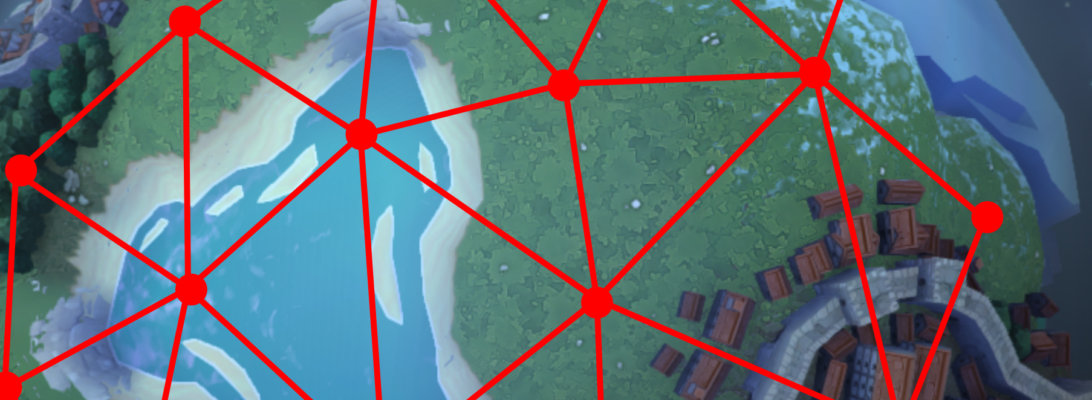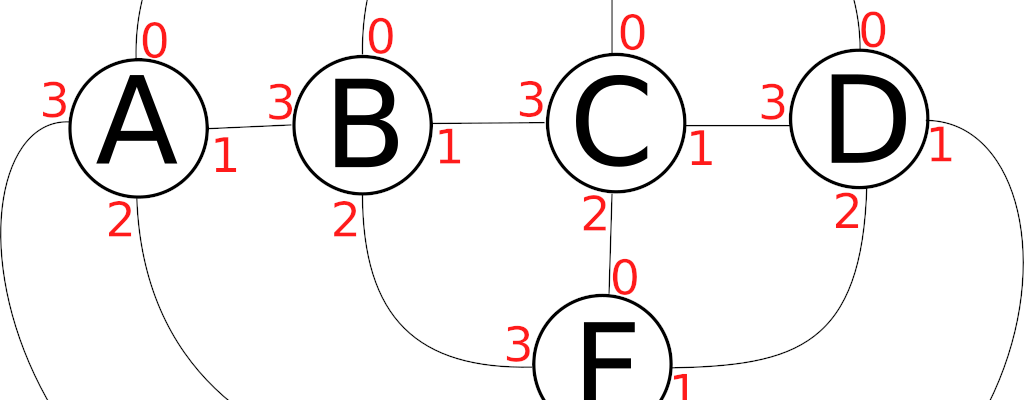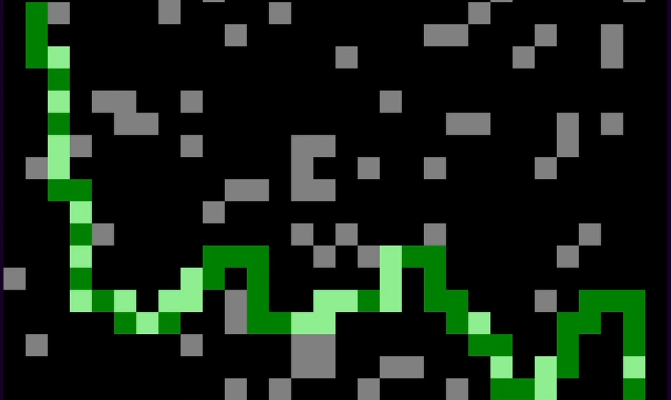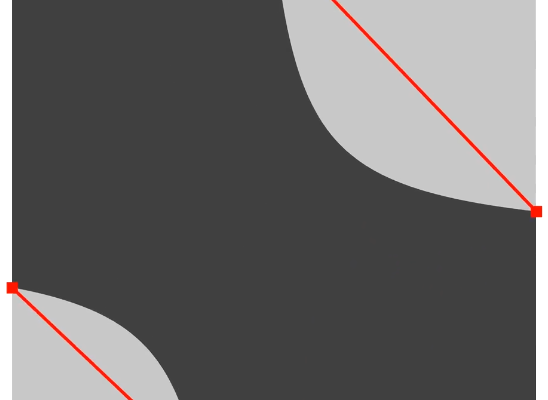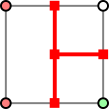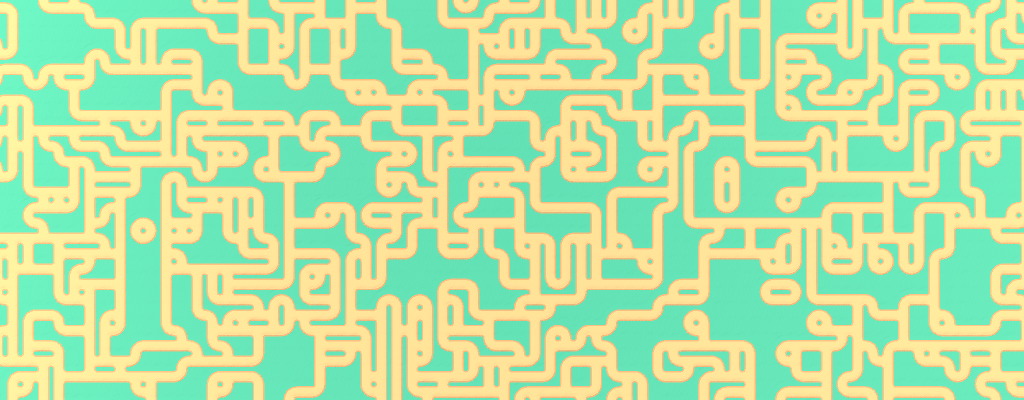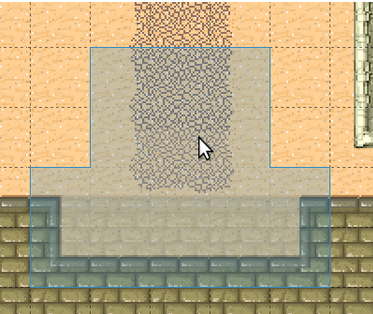It’s been over a year since I last deconstructed how a game does its procedural generation. Today we’ll be looking at Planet, a 2016 cosy design toy by one of my favourite developers, Oskar Stålberg.
Continue readingIntermediate
Rotation Graphs
Graphs are a data structure we’ve already talked a lot. Today we’re looking at extension of them which is both obvious and common, but I think is rarely actually discussed. Normal graphs are just a collection of nodes and edges, and contain no spatial information. We’re going to introduce rotation graphs (aka rotation maps) that contain just enough information to allow a concept of turning left or right – i.e. rotation.
Continue readingChiseled Paths Revisited
Back in 2017, I described a method of random path generation called Chiseling. It gives very nice wiggly paths, but I was never satisifed with the performance. I later revisited it, and found a faster algorithm, but it was a bit complicated to implement.
I’m pleased to say that I think I’ve finally found a way of implementing it that is both fast and simple.
Continue readingResolving Ambiguities in Marching Squares
One issue with 2d Marching Cubes (i.e. Marching Squres) that I glossed over in my original tutorial is the issue of ambiguity. Later I talk about how dual contouring avoids this problem. But it turns out there’s actually a well known, but little documented way of resolving those ambiguities called the Asymptotic Decider, which I’ll explain below.
Continue reading2d Marching Cubes with Multiple Colors
2d Marching cubes (sometimes called marching squares) is a way of drawing a contour around an area. Alternatively, you can think of it as a drawing a dividing line between two different areas. The areas are determined by a boolean or signed number value on each vertex of a grid:
But what if we didn’t have a boolean value? What if we had n possible colors for each vertex, and we wanted to draw separating lines between all of them?
Continue readingClassification of Tilesets
Many years ago I started looking at different sorts of tiles sets used by artists. A good tile set is flexible enough to allow tiles to be re-used in a lot of situation, but simple enough that the tiles can be easily created. Ideally, it would enable autotiling or otherwise be easy to design levels with.
Though I covered a few different techniques back then, I fell short of any systematic discussion of tiles. Here I plan to take a more rigorous approach, in the hopes of making a common language for referring to different tile sets, and pointing out the key variations in design. Maybe we’ll even discover something new, like Mendelev predicting new elements for the periodic table.
You can explore many of the tilesets discussed using the Tileset Creator tool I made.
Continue readingInfinite Modifying in Blocks
I’m going to share with you a technique I’ve found for doing lazy, reliable, deterministic, constant-time infinite generation of tile based levels using Wave Function Collapse (WFC). But first, let’s cover some background, Modifying in Blocks, and lazy chunk based infinite generation.
Continue readingConstraint-Based Tile Generators
Last article, we were comparing WaveFunctionCollapse (WFC), and Model Synthesis (MS). These are both similar procedural generation techniques that work along similar lines. Specifically, they generate a grid of tiles (or pixels), using a set of hard constraints, and some generalized solver technique to find a solution, a set of tiles that satisfies all the constraints provided. Let’s call this overall class of thing constraint-based tile generators.
The techniques have been pretty popular in recent years, and part of that is because it’s actually a very easy concept to experiment with and extend. Many of the more practical examples in the wild include their own extensions, as basic WFC tends to produce levels that look a bit repetitive and structureless.
Today I thought I’d do a review of all the different ways that you can customize this generation technique, showing how WFC and MS are subsets of a greater class. The whole family of such algorithms is much larger and I think there’s a lot of potential still to explore.
Continue readingBeyond Basic Autotiling
Autotiling is a system for automatically picking which tile to place on the map, based on user input. It’s a fast way to design levels without having to fiddle with every tile indivually to ensure they are all consistent. Autotiling becoming increasingly well supported by game engines.
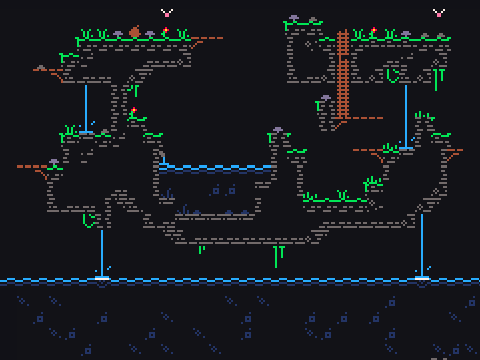
While there’s not a great deal of standardization at the moment, I’d say that 90% of systems at the moment are based on marching squares, which chooses between 16 tiles based on user input at each corner, or blob, which chooses between 47 tiles based on user input on each tile. For example, Godot’s Autotiling system or Tiled’s Terrain brush. I’ve written about these and other schemes before.
These approaches do work quite well for quickly whipping up a level, after the initial slog of creating the tiles, but when you start getting into more complex cases, a major shortcoming appears: combinatorial explosion.
Basically, as autotilers chose one tile for each situation, there needs to be a tile ready for any given combination. It’s bad enough creating 47 tiles needed for the blob pattern, but that only handles transitions between two different terrains. If you add a third, you need hundreds of tiles. And even simpler patterns quickly blow up with a few terrains.
Today, we look at a few ways to deal with that.
Continue readingDriven WaveFunctionCollapse
WaveFunctionCollapse (WFC) is a procedural generation technique for creating images and tile-based levels. I’ve discussed it many times before.
As a technique, it has some pros and cons. Pro: it’s almost uncannilly good at stitching together tilesets into interesting arrangements, and is pretty good at copying the style in a supplied sample image. Cons: it becomes bland and repetitive at large scales.
In my software Tessera, I’ve been working on various ways of customizating the generation to work around that con. But I’ve seen another way that turns WFC on its head. Instead of using WFC as a full level generator, we want to decide the overall structure of a level some other way, and then use WFC just for the details.
Continue reading